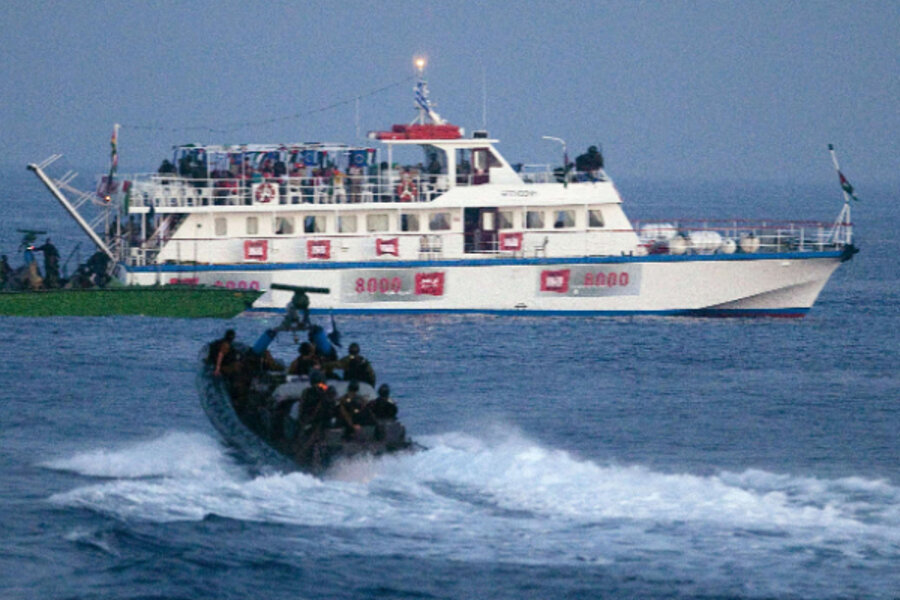Flotilla aid fails to deliver in Gaza
Loading...
| Gaza City, Gaza
More than seven months after Israel diverted a Gaza-bound "Freedom Flotilla" with lethal force and agreed to help transfer its supplies to Gaza, Israel and Turkey are still haggling over the legality of Israel's intervention. Yesterday an internal Israeli investigation cleared its military of any wrongdoing.
But despite causing such an uproar, the aid meant to help Gazans has yet to be fully distributed – and much of it is too damaged to be used.
Nine activists were killed in Israel's raid on the mainly Turkish flotilla, sparking an international uproar and prompting Israel to allow more goods into Gaza. But while the flotilla succeeding in putting a global spotlight on Gaza's material needs, its ability to meet those needs fell far short.
The aid was initially stored in Israeli Ministry of Defense warehouses. Some of it, such as thousands of tons of cement meant for building schools and hospitals, is still in warehouses. Officials are wrangling over what to use the cement for, and whether it is even usable.
Of the aid that reached Gaza, recipients say 10 to 60 percent was unusable. They accuse Israel of damaging the goods during security checks, or leaving sensitive medical supplies in the elements. The Defense Ministry said that the equipment was "in poor condition upon arrival to Israel."
At Haifa Medical Center, director Samir el-Safadi said that the hospital received about $400,000 worth of goods, only about 40 to 50 percent of it usable. He pointed out an ultrasound machine that lacked probes, and a 20-year-old dialysis machine that lacked an instruction manual and was collecting dust in a closet. [Editor's note: The original version misidentified the origin of the goods.]
Stacked haphazardly nearby was a refrigerator for storing blood that had a huge dent in its side, and a broken EKG machine. The hospital is attempting to fix the equipment.
"These flotillas are an attempt to break the siege, but are not the right way to bring humanitarian supplies to Gaza," said Mr. Safadi, "but we are very grateful to everyone who is working to break the siege."
Muner al-Boursh, pharmacy department director at the Palestinian Authority's Health Ministry in Gaza, said about 90 percent of what he received was usable – but that was after the World Health Organization had sorted through the aid and destroyed the damaged goods.
The ministry was able to distribute dozens of motorized wheelchairs. But Mr. Boursh says the ministry's top need was medicine, and much of the medicine received was ruined because it had not been stored properly.
Other aid is unaccounted for. At the Al Basma Club for the Disabled, director Eid Shaqura is still waiting for the children's soccer kits, children's school supplies, and women's gym equipment earmarked for his organization. Al Basma, which encourages sports for disabled people, is unique in Gaza – an "oasis," Mr. Shaqura says. "All the time they say, 'What about the equipment?' I told them, we have to wait."





